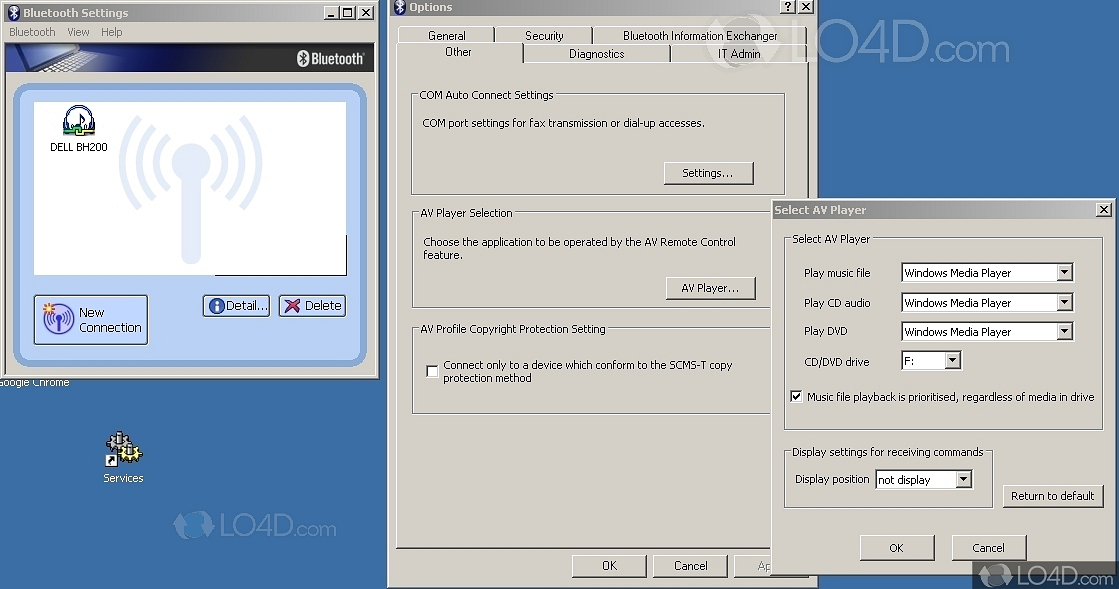

- #Toshiba bluetooth stack 6.4 mac os x
- #Toshiba bluetooth stack 6.4 install
- #Toshiba bluetooth stack 6.4 driver
- #Toshiba bluetooth stack 6.4 for android
- #Toshiba bluetooth stack 6.4 software
This was lacking in the Windows XP Service Pack 2 built-in Bluetooth stack, which had to be entirely replaced by a third-party stack for additional profile support.
#Toshiba bluetooth stack 6.4 driver
The Windows Vista Bluetooth stack supports a kernel mode device driver interface besides the user-mode programming interface, which enables third parties to add support for additional Bluetooth Profiles. The Windows Vista Bluetooth stack is improved, with support for more hardware IDs, EDR performance improvements, Adaptive frequency hopping for Wi-Fi co-existence, and Synchronous Connection Oriented (SCO) protocol support which is needed for audio profiles.
#Toshiba bluetooth stack 6.4 software
The third-party companies were then allowed to release the QFE as part of their own Bluetooth device's software installation. Microsoft only released this directly to third-party companies and did not directly release it to the public.
#Toshiba bluetooth stack 6.4 install

#Toshiba bluetooth stack 6.4 mac os x
Since version 10.2, Apple Inc.'s Mac OS X has contained an integrated Bluetooth stack.
#Toshiba bluetooth stack 6.4 for android
Marcel Holtmann from the Intel Open Source Technology Center, claimed that Google made a poor choice in switching to BlueDroid, during a presentation for BlueZ for Android at the Android Builders Summit in 2014. BlueDroid has been since been renamed Fluoride. BlueDroid/Fluoride Īndroid switched from BlueZ to its own BlueDroid stack, created by Broadcom, in late 2012. Hidd is the Bluetooth human interface device (HID) daemon. BlueZ is licensed under the GNU General Public License (GPL), but reported to be on its way toward switching to the GNU Lesser General Public License (LGPL). In addition to the basic stack, the bluez-utils and bluez-firmware packages contain low level utilities such as dfutool which can interrogate the Bluetooth adapter chipset to determine whether its firmware can be upgraded.

It was initially developed by Qualcomm, and is available for Linux kernel versions 2.4.6 and up. As of 2006, the BlueZ stack supports all core Bluetooth protocols and layers. Its goal is to program an implementation of the Bluetooth wireless standards specifications for Linux. BlueZ īlueZ, initially developed by Qualcomm, is a Bluetooth stack, included with the official Linux kernel distributions, for Linux kernel-based family of operating systems. Linux BlueALSA īlueALSA is a Bluetooth audio ALSA backend that allows the use of Bluetooth-connected audio devices without the use of PulseAudio or PipeWire. Ī netgraph-based implementation from FreeBSD has also been available in the tree since 2008, dating to an import of Netgraph from the FreeBSD 7 timeframe into DragonFly, but was possibly disabled until, and may still require more work. DragonFly BSD ĭragonFly BSD has had NetBSD's Bluetooth implementation since 1.11 (2008), first released with DragonFly BSD § 1.12. OpenBSD has had the implementation from NetBSD for some time, but it was removed in 2014 due lack of maintainership and code rot. NetBSD has its own Bluetooth implementation, committed in 2006, and first released with NetBSD § 4.0. The implementation was committed in 2002, and first released with FreeBSD 5.0. A broad variety of Bluetooth USB dongles are supported by the ng_ubt driver. The FreeBSD bluetooth stack is implemented using the Netgraph framework. General-purpose implementations BSD FreeBSD


 0 kommentar(er)
0 kommentar(er)
